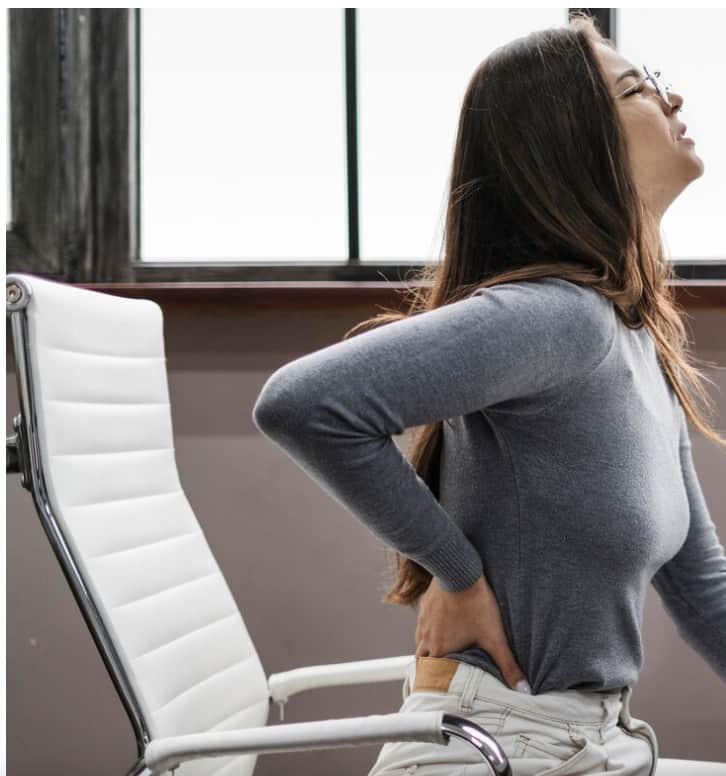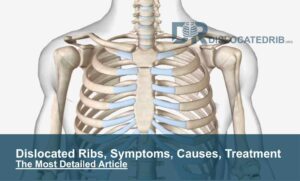
Can bad posture cause chest pain?
Can Bad Posture Cause Chest Pain? A Comprehensive Guide
Poor posture has become an epidemic in today’s society, with many individuals adopting slouched or hunched positions for extended periods. While this seemingly harmless habit of sitting or standing with bad posture may seem insignificant, it can harm your overall health and well-being after a prolonged period, including contributing to chest pain. chest pain from slouching or hunching is a prevalent problem nowadays; if you have asked, can bad posture cause chest pain? Then we advise you to read on.
Can bad posture cause chest pain – The Link Between Bad Posture and Chest Pain
The connection between bad posture and chest pain is complex and multifaceted. Several factors contribute to this relationship, including:
- Muscle Imbalance: Poor posture from slouching or hunching can lead to muscle imbalances, particularly in the chest and back muscles. Tight and overactive chest muscles, such as the pectoralis major and minor, can compress the rib cage, restricting lung capacity and causing respiratory issues. Meanwhile, weak and underactive back muscles, such as the rhomboids and trapezius, can contribute to slouching and strain the muscles surrounding the chest, leading to pain.
- Nerve Compression: The nerves that supply the chest muscles can become compressed due to poor posture, causing discomfort and pain. This is particularly common in the upper back and neck region, where nerves can get pinched between tight muscles and bones.
- Decreased Lung Function: Poor posture can impair lung function by restricting the expansion of the rib cage, making it quite difficult to take deep breaths. This then leads to shallow breathing, which can cause chest tightness and fatigue and exacerbate respiratory problems such as asthma, as well as chronic obstructive pulmonary disease (COPD).
- Trigger Point Activation: Trigger points are hypersensitive areas in muscles that, when activated, can cause pain in other body areas. Bad posture can activate trigger points in the chest muscles, leading to localized pain and radiating discomfort.
- Stress and Anxiety: Poor posture can exacerbate stress and anxiety, which are well-known triggers for chest pain. When we feel stressed or anxious, our muscles tense up, including those in the chest and back. This can cause muscle strain, pain, and a heightened perception of discomfort.
Identifying Signs and Symptoms of Chest Pain Caused by Bad Posture
Chest pain caused by bad posture typically presents as a dull and aching sensation in the chest or upper back. This sensation may worsen with prolonged sitting or standing and may be accompanied by other symptoms, such as fatigue, shortness of breath, and muscle stiffness.
Seeking Professional Guidance
If you experience chest pain, it is crucial to consult with a professional healthcare provider to rule out any severe underlying medical conditions. Once any potential medical causes are eliminated, a physical therapist or chiropractor can medically assess your posture and provide personalized exercises to strengthen and stretch the appropriate muscles, improving posture and reducing chest pain.
Can bad posture cause chest pain – Correcting Poor Posture
Good posture is essential, if not for maintaining overall health and well-being. It can help to prevent pain, improve balance, and reduce the risk of rib injuries such as dislocation or subluxation. However, many people develop poor posture habits that can lead to discomfort, including various long-term health problems. If you’re one of the millions of people who struggle with poor posture, there are steps you can take to correct it and improve your overall health and well-being.
Preventive Measures to Combat Bad Posture and Chest Pain
Adopting good posture habits can significantly reduce the risk of chest pain and improve overall health. Here are some preventive measures to consider:
- Be Mindful of Your Posture: Actively remember to take regular posture breaks to check your posture throughout the day. To do this, stand tall with your shoulders back, chest lifted, and head held high. Avoid slouching or hunching over.
- Use Proper Ergonomics: Whenever you’re sitting at a desk or using a computer, ensure your chair is at the correct height and your monitor is at eye level. Your feet should be flat on the floor, and your elbows should be bent at around a 90-degree angle.
- Strengthen and Stretch Your Muscles: Regularly incorporate exercises that target the chest, back, and core muscles. These types of exercises significantly improve muscle balance, flexibility, and overall posture.
- Maintain a Healthy Weight: Excess weight can put additional strain on muscles and joints, contributing to poor posture and chest pain. Maintaining a healthy body weight and BMI can help to reduce this stress.
- Get Regular Exercise: Regular physical activity and exercise help to improve overall fitness, strengthen muscles, and improve posture. Aim for at least half an hour of moderate to intensity exercise most days of the week.
- Seek professional help: If you struggle to correct your posture, consider seeing a physical therapist or chiropractor. They can assess your body posture and create a personalized plan to help you improve your alignment and reduce pain.
Adopting these preventive measures and practicing good posture habits can significantly reduce your risk of chest pain and improve your overall well-being. Remember, good posture is not just about aesthetics; it’s about caring for your body and promoting long-term health and happiness.
How to Correct Poor Posture from slouching or hunching
The good news is that you can do several things to correct poor posture and improve your overall health.
Remember, correcting poor posture takes time and effort. Be patient with yourself, and don’t give up. You can consistently improve your body posture and overall health and well-being.
Here are the best products for correcting poor posture
- Upright GO 2 Posture Corrector: This smart device is worn around the waist and provides real-time feedback to help you improve your posture. It also tracks your progress over time.
- Pros:
- Provides real-time feedback data to help you improve your posture
- Tracks your progress over time
- Comfortable and easy to wear
- Cons:
- It can be pricey.
- It may only be suitable for some.
Personal Opinion from our readers: “I’ve been using the Upright GO 2 for a few weeks now and am impressed with it. It’s helped me to become more aware of my posture, and I’m already seeing a HUGE difference in my pain levels.” – Anit J.
- Upright GO 2 Posture Corrector
- ComfyBrace Posture Corrector: This breathable and comfortable posture corrector is made of neoprene and can be worn under or over clothing. It provides gentle support to help you maintain proper alignment.
- Pros:
- Breathable and comfortable
- It can be worn under or over clothing.
- Adjustable to fit most sizes
- Gentle support
- Cons:
- It may need to provide more support for some people.
Personal Opinion from our readers: “I’ve been using the ComfyBrace Posture Corrector for a few months, and it’s been a lifesaver. It’s helped me reduce my back pain and feel more confident.” – John.
- ComfyBrace Posture Corrector
- FY Posture Corrector: This posture corrector is designed to improve muscle memory by gently reminding you to stand up straight. It is made of breathable materials and is adjustable to fit most sizes.
- Pros:
- Designed to improve muscle memory
- Made of breathable materials
- Adjustable to fit most sizes
- Comfortable to wear
- Cons:
- It may not be as effective as other posture correctors.
Personal Opinion from our readers: “I’ve been using the FY Posture Corrector for a couple of weeks now, and I must say, I’m starting to see some results. I’m standing up straighter, and my back pain is starting to disappear.” – H.
- FY Posture Corrector
- VOKKA Posture Corrector: This posture corrector is made of breathable and moisture-wicking materials, making it comfortable to wear all day. It is also adjustable and can be worn under or over clothing.
- Pros:
- Breathable and moisture-wicking materials
- Comfortable to wear all day long
- Adjustable and can be worn under or over clothing
- Strong support
- Cons:
- It may be too tight for some people.
Personal Opinion from our readers: “I’ve been using the VOKKA Posture Corrector for a few months, and it’s been great. It’s helped me to improve my posture and reduce my pain levels. I highly recommend this product to people like me struggling with bad posture.” – David S.
- VOKKA Posture Corrector
- Copper Compression Posture Corrector: This posture corrector is made of breathable fabric and contains copper coils that promote healing and reduce pain. It is designed for people who are active and want extra support.
Copper Compression Posture Corrector
- Pros:
- Made of breathable fabric
- It contains copper coils that are said to promote healing and reduce pain.
- Designed for people who are active and want extra support
- Cons:
- It may need to be more bulky for some people.
- It may only be suitable for some.
Customer review: “I’ve been using the Copper Compression Posture Corrector for three weeks now, and I’m impressed with how well it works. It’s helped me reduce my back pain, making me much more comfortable exercising.” – Tom R.
- Copper Compression Posture Corrector
In addition to these posture correctors, many other products can help improve posture, such as:
- Posture-friendly chairs: These chairs are designed to promote good posture by providing lumbar support and encouraging you to sit up straight.
- Posture-friendly pillows: These are designed to support your head and neck in a neutral position, which can help reduce neck pain and improve posture.
- Posture exercises: There are a number of exercises that can help improve muscle density, strengthen them to support your spine better, and improve your posture. These exercises can be done at home or in a gym.
It is important to note that posture correctors can not be used as a substitute for proper, regular exercise or other lifestyle changes. They can help improve your posture, but they are not a magic bullet.
We hope this article has answered your question ” can bad posture cause chest pain?”



